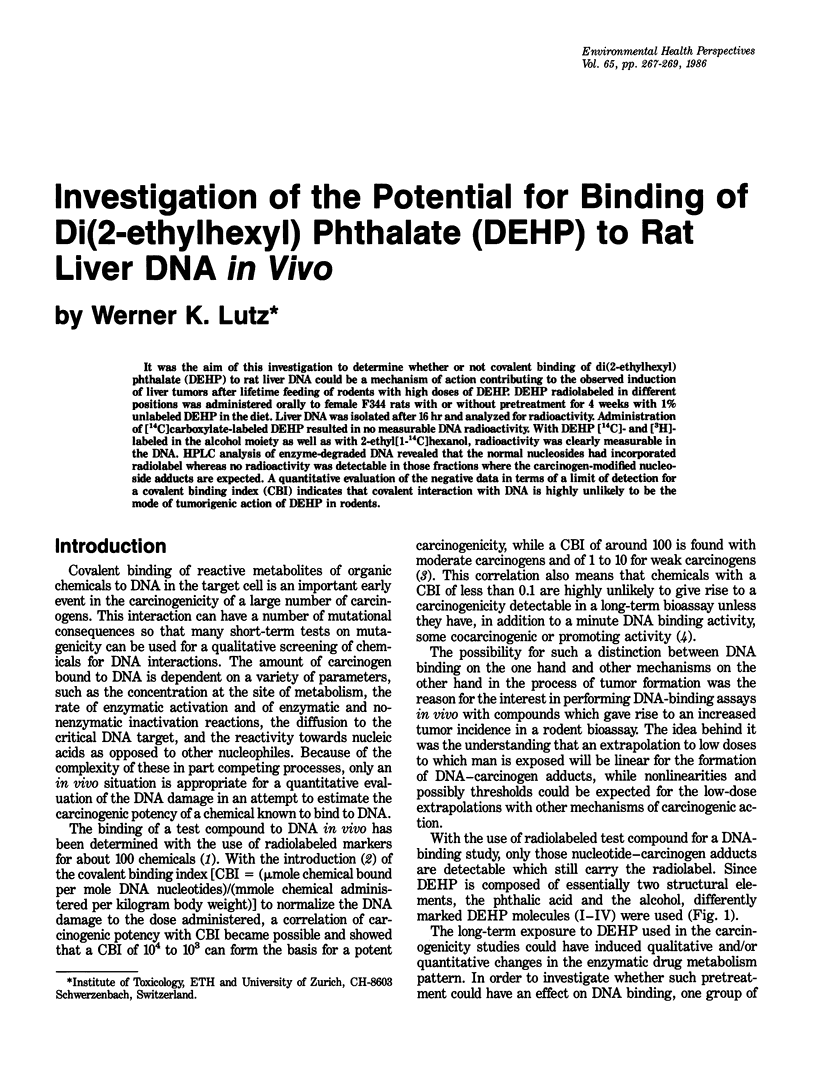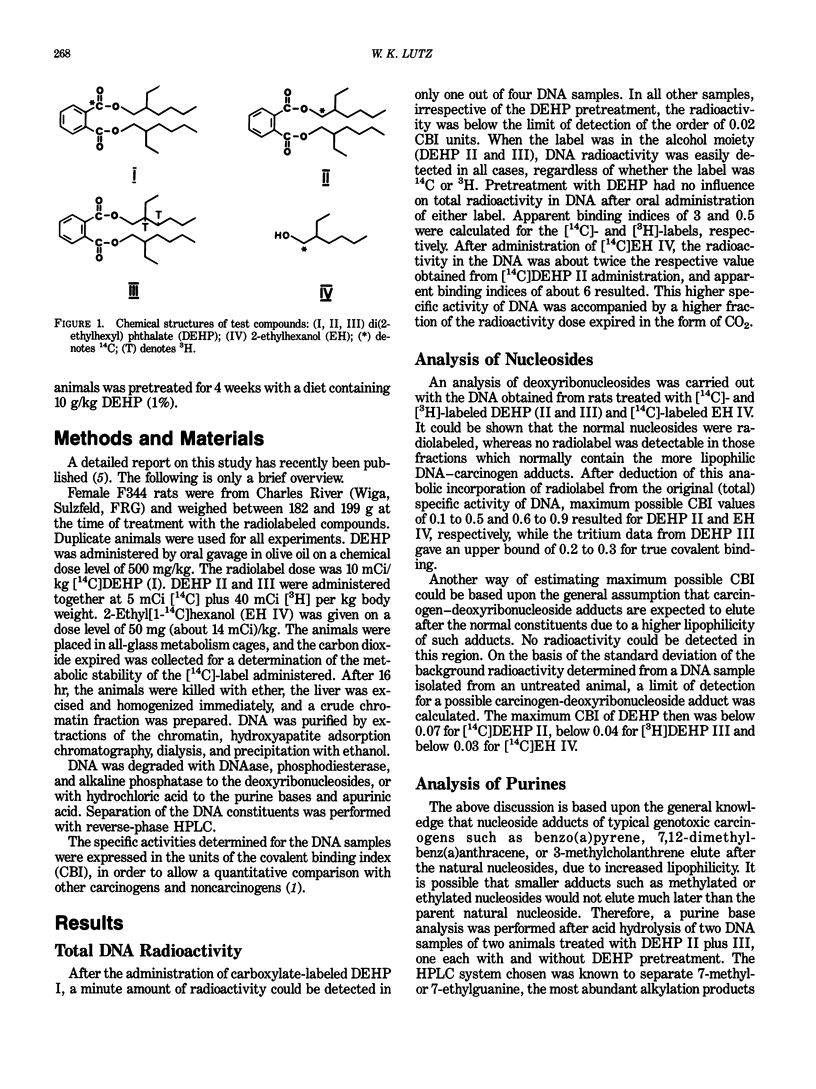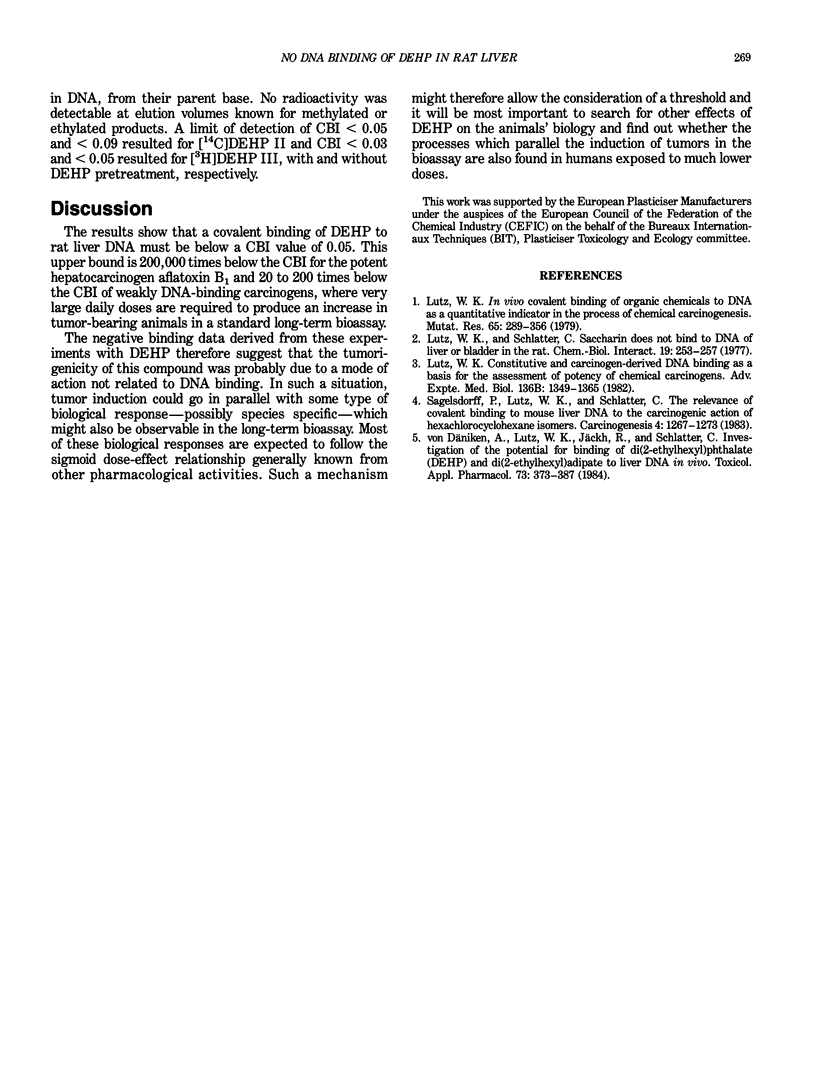Abstract
It was the aim of this investigation to determine whether or not covalent binding of di(2-ethylhexyl) phthalate (DEHP) to rat liver DNA could be a mechanism of action contributing to the observed induction of liver tumors after lifetime feeding of rodents with high doses of DEHP. DEHP radiolabeled in different positions was administered orally to female F344 rats with or without pretreatment for 4 weeks with 1% unlabeled DEHP in the diet. Liver DNA was isolated after 16 hr and analyzed for radioactivity. Administration of [14C]carboxylate-labeled DEHP resulted in no measurable DNA radioactivity. With DEHP [14C]- and [3H]-labeled in the alcohol moiety as well as with 2-ethyl[1-14C]hexanol, radioactivity was clearly measurable in the DNA. HPLC analysis of enzyme-degraded DNA revealed that the normal nucleosides had incorporated radiolabel whereas no radioactivity was detectable in those fractions where the carcinogen-modified nucleoside adducts are expected. A quantitative evaluation of the negative data in terms of a limit of detection for a covalent binding index (CBI) indicates that covalent interaction with DNA is highly unlikely to be the mode of tumorigenic action of DEHP in rodents.
Full text
PDF


Selected References
These references are in PubMed. This may not be the complete list of references from this article.
- Lutz W. K. In vivo covalent binding of organic chemicals to DNA as a quantitative indicator in the process of chemical carcinogenesis. Mutat Res. 1979 Dec;65(4):289–356. doi: 10.1016/0165-1110(79)90006-x. [DOI] [PubMed] [Google Scholar]
- Lutz W. K., Schlatter C. Saccharin does not bind to DNA of liver or bladder in the rat. Chem Biol Interact. 1977 Nov;19(2):253–257. doi: 10.1016/0009-2797(77)90036-9. [DOI] [PubMed] [Google Scholar]
- Sagelsdorff P., Lutz W. K., Schlatter C. The relevance of covalent binding to mouse liver DNA to the carcinogenic action of hexachlorocyclohexane isomers. Carcinogenesis. 1983 Oct;4(10):1267–1273. doi: 10.1093/carcin/4.10.1267. [DOI] [PubMed] [Google Scholar]
- von Däniken A., Lutz W. K., Jäckh R., Schlatter C. Investigation of the potential for binding of Di(2-ethylhexyl) phthalate (DEHP) and Di(2-ethylhexyl) adipate (DEHA) to liver DNA in vivo. Toxicol Appl Pharmacol. 1984 May;73(3):373–387. doi: 10.1016/0041-008x(84)90089-9. [DOI] [PubMed] [Google Scholar]


